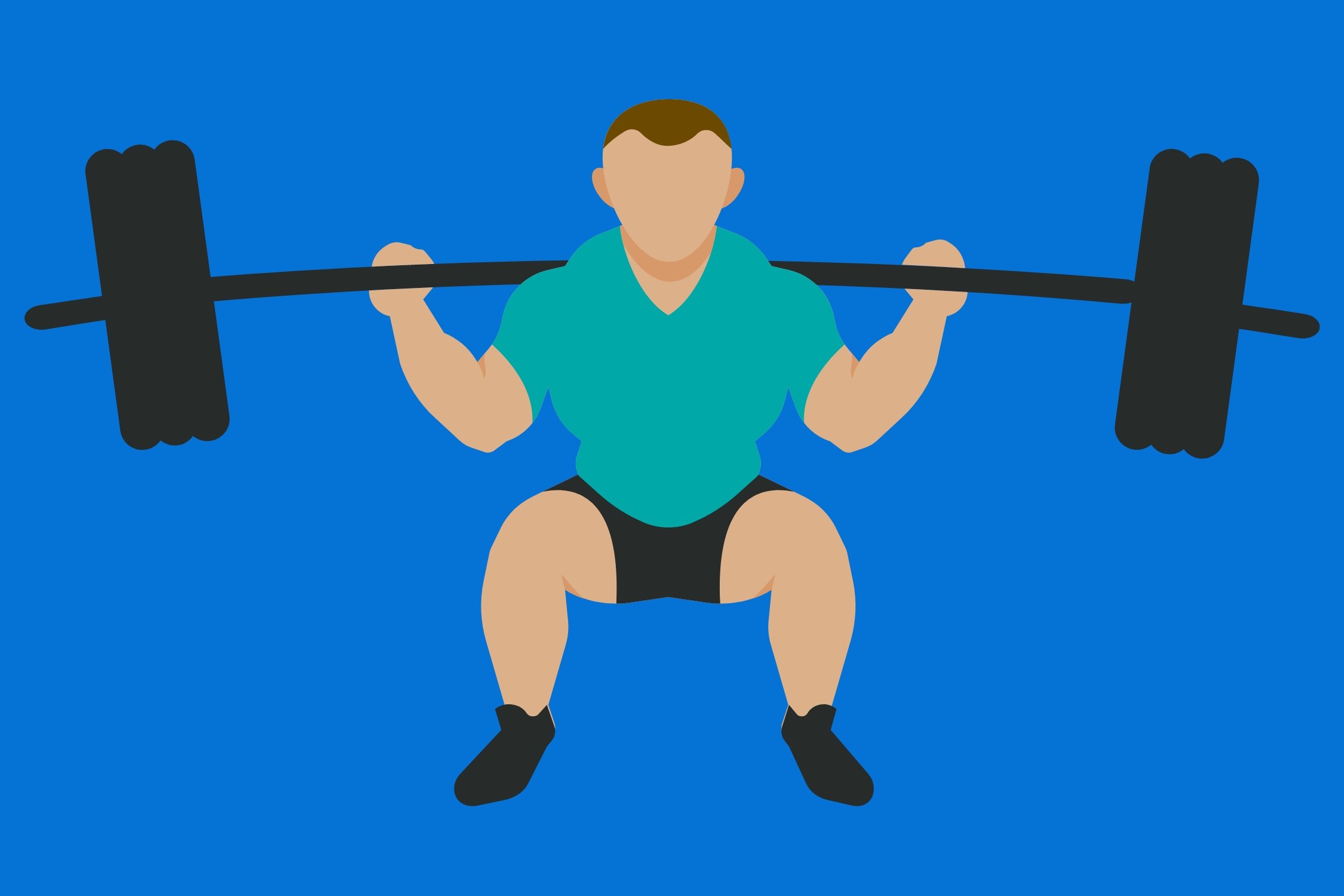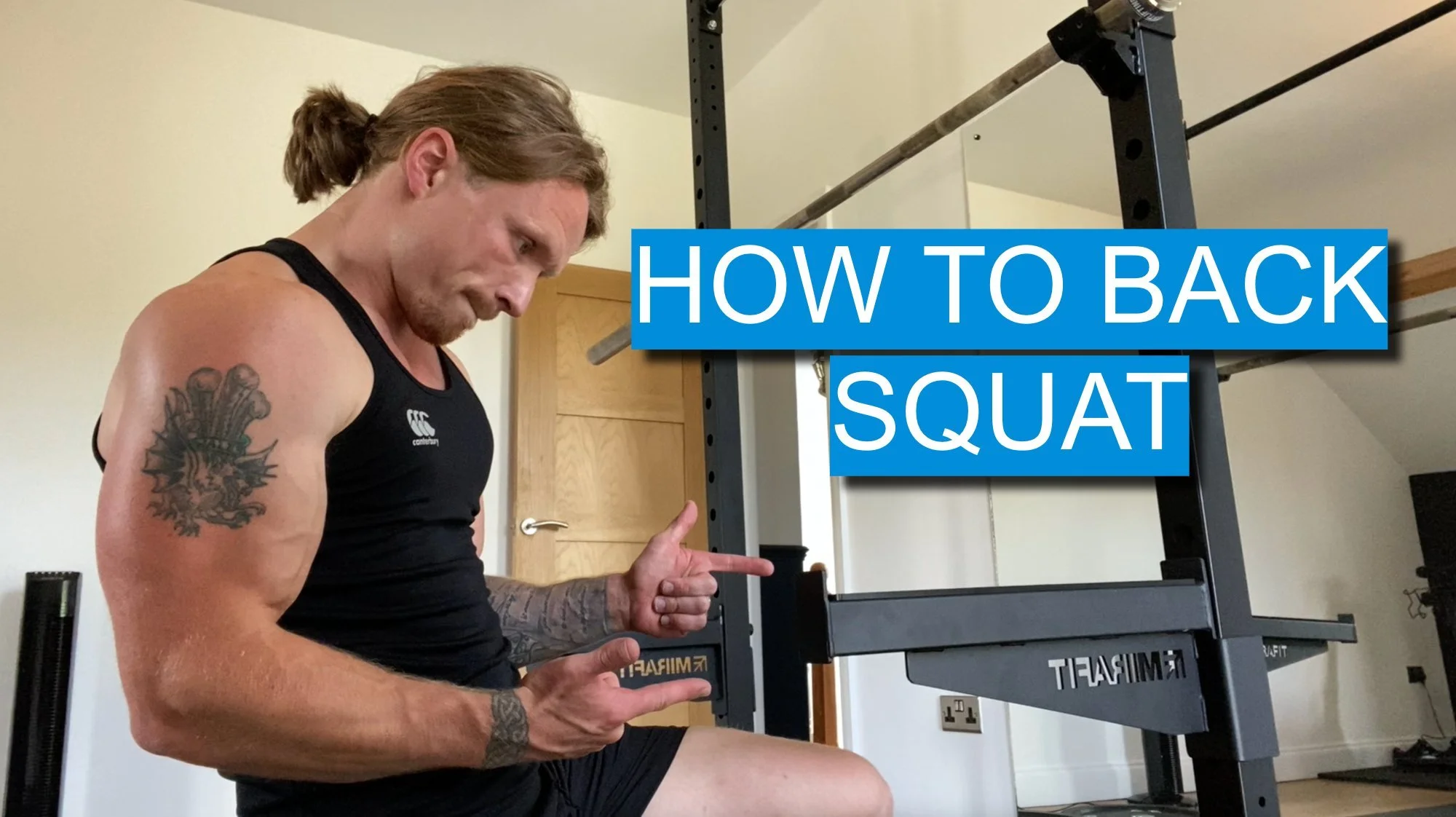How to back squat
How to perform a perfect barbell back squat. The back squat is one of the coolest and most effective exercises you can do, and today I'm going to show you how to nail it with the most impeccable technique.
Prefer to watch than read? Then please check out the video below:
What muscles are targeted in the back squat?
Like any exercise, you want to know what muscles you're working. With the almighty squat, we're developing the quads due to the knee extension part of the movement and the glutes with the hip extension element – the adductor magnus, which are located at the inner thighs, also aid with this. This is why your inner thighs can often feel the love following some heavy squats. We're also developing the spinal erectors (AKA the lower back) as they'll be under isometric contraction. So, it's hitting a good few muscles.
The back squat setup
Before you even start the exercise, there are a few things we want to check. Firstly, ensure the j-cups are positioned low enough so that when you unrack the bar, you don't knock them off on the way out. The last thing you want is to be stuck there with over 100 kilos on your back a no way to rack. Conversely, you want it high enough so that you're not adding an extra half squat to the exercise. Find the sweet spot. That's what she said. Also, use spotters when available. When placing the plates on the bar, ensure you tense your guns – this does nothing for your squat but tells the rest of the gym that something glorious is about to happen. Ensure equal weight is on both sides and the bar is centred – you don't want to be performing some kind of weighted cartwheel.
Back squat starting position
Grip the bar and position your hands slightly wider than shoulder-width apart. When squatting, the hands want to be as comfortably close to your shoulders as possible – this better activates the muscles in the upper back and provides a more stable base for the bar. You can go for a high bar squat with the bar resting up on your traps or a low bar squat where it's more on your rear delts. A high bar squat is more quad dominant, and the low bar squat gets the glutes more involved, but the difference is negligible, so pick the one you feel most comfortable with. Most people tend to go for a higher bar squat as it's less taxing on the lower back. If it's very uncomfortable or pushing into your neck, it's too high, and it's too low if you feel like it's going to break your wrists or slide down your back. If you slowly slide the bar from your upper traps down towards your posterior delts, you should find a secure spot where it's most comfortable.
Unracking the barbell
To unrack, firstly place your feet underneath the bar, then push the hips forward. Don't quad it up, as it'll exhaust your legs – we want these to be fresh so we can impress your gym rival with how awesome your squat is. You now have full control of the bar, so take three steps back – one small step followed by a bigger step and then a mini step to get your feet even.
Performing the barbell back squat
Ensure your feet are slightly wider than shoulder-width apart and your toes are slightly pointing outwards – they'll be at a 15 to 30 degree angle. Head up, point elbows slightly back, and have equal pressure going through the full foot – don't put too much weight on your toes or heels, as this will disrupt the bar path. Huge inhale and take that air deep into your diaphragm, subsequently pushing your abdominal wall into your belt and effectively bracing your core. You should feel your belt tighten. Descend by simultaneously pushing your hips back and your knees towards your toes. Don't let your knees track inwards. Descend at a controlled pace, but not too slow – around one second will suffice. Otherwise, you'll over-fatigue yourself. Squat until you hit just below parallel to the ground with the hip crease just below the knee joint. If you have excessive but wink, you've gone too far. Once you hit depth, explode up by pressing against the ground while keeping upright. Exhale once you pass the sticking point – around two-thirds of the way up. Essentially, when you're fully out of that bottom position and know you've made the lift, you can exhale. Once you're back to the starting position with hips locked out and glutes contracted, you've completed it.
You did it!
You did it, you son of a gun, you did it – one of the most biomechanically impressive exercises you can do, and you smashed it like it was nothing. I'm proud of you!


